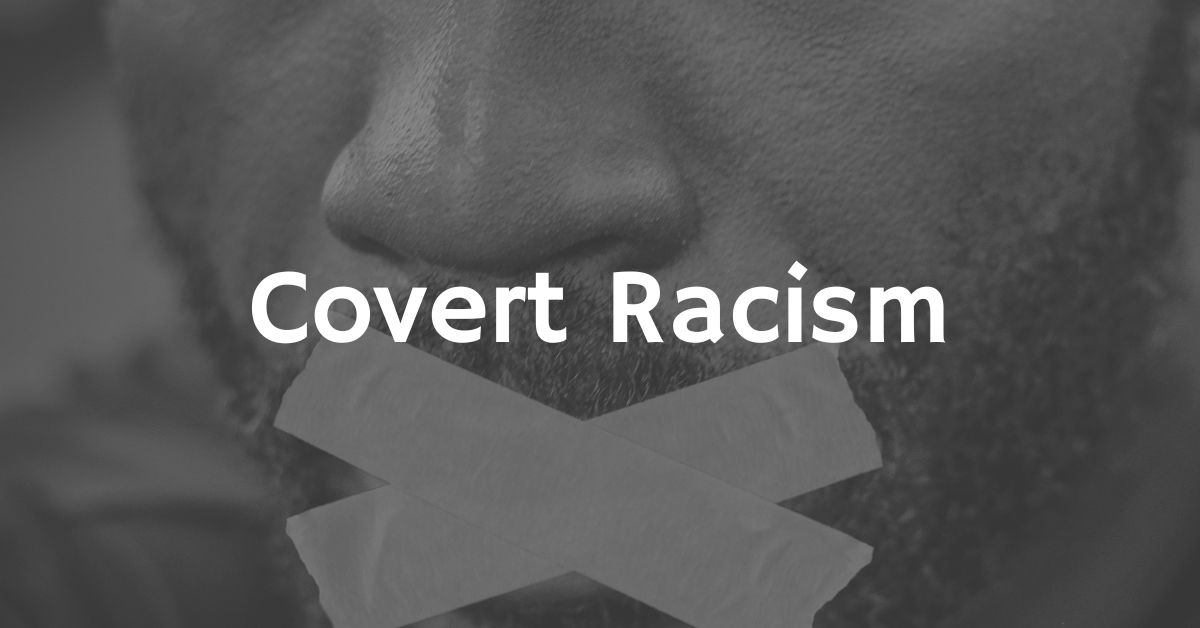Covert Racism: Definition, Examples, and Strategies to Address It
What is Covert Racism?
Covert racism is a subtle and concealed form of racial discrimination that operates in hidden ways, often going unnoticed due to its indirect nature. Unlike overt racism, which involves explicit and blatant discriminatory actions, covert racism manifests through implicit biases, microaggressions, and racially coded language. This form of racism is deeply embedded in societal structures, perpetuating racial inequalities and marginalizing minority groups.
Key Characteristics of Covert Racism
- Subtle and Indirect: Covert racism operates through unspoken biases and behaviors.
- Embedded in Society: It is woven into societal norms, institutions, and everyday interactions.
- Perpetuates Inequality: Covert racism maintains racial hierarchies and disadvantages marginalized communities.
Examples of Covert Racism in Various Settings
In the Workplace
Covert racism in the workplace often manifests through subtle discriminatory practices that create an unwelcoming environment for minority employees. Examples include:
- Microaggressions: Comments like “You’re so articulate for someone of your background” or “You don’t act like other [racial group] people I know.”
- Exclusion from Opportunities: Minority employees may be overlooked for promotions, mentorship programs, or high-profile projects, despite their qualifications.
- Biased Hiring Practices: Unconscious biases may lead recruiters to favor candidates who share their racial or cultural background, perpetuating a lack of diversity.
In Healthcare
Covert racism in healthcare can lead to disparities in treatment and outcomes for minority patients. Examples include:
- Implicit Bias in Treatment: Healthcare providers may unconsciously downplay the symptoms or pain levels of minority patients, leading to inadequate care.
- Lack of Cultural Competence: Medical professionals may fail to consider cultural differences when providing care, resulting in miscommunication or mistrust.
- Unequal Access to Resources: Minority communities often face barriers to accessing quality healthcare, such as limited availability of services in their neighborhoods.
In Media and Entertainment
Covert racism in media often reinforces harmful stereotypes and excludes diverse voices. Examples include:
- Stereotypical Portrayals: Characters from minority backgrounds are often depicted in limited, stereotypical roles, such as criminals or sidekicks.
- Lack of Representation: Minority groups are underrepresented in leading roles, both on-screen and behind the scenes.
- Racially Coded Language: Media narratives may use coded language to describe minority communities, perpetuating negative stereotypes.
In Law Enforcement and Criminal Justice
Covert racism in the criminal justice system contributes to racial disparities in arrests, sentencing, and incarceration rates. Examples include:
- Racial Profiling: Law enforcement officers may disproportionately target minority individuals for stops, searches, and arrests.
- Biased Sentencing: Judges and juries may impose harsher sentences on minority defendants compared to their white counterparts for similar offenses.
- Systemic Inequities: Policies like mandatory minimum sentences and cash bail disproportionately affect minority communities.
Contributing Factors to Covert Racism
Societal Norms and Implicit Biases
Societal norms play a significant role in perpetuating covert racism. From a young age, individuals are influenced by family, peers, and media, which can normalize discriminatory behaviors. These norms lead to implicit biases unconscious attitudes or stereotypes that affect decision-making and interactions.
Unconscious Bias in Everyday Interactions
Unconscious biases are deeply ingrained and often go unnoticed. They manifest in subtle ways, such as racially coded language or microaggressions. For example, complimenting a minority individual for being “articulate” may imply surprise based on racial stereotypes. These biases contribute to a broader framework of racial discrimination.
Strategies to Mitigate Covert Racism
Covert racism permeates various sectors of society, from workplaces to healthcare, media, and criminal justice systems. Tackling this subtle yet pervasive form of discrimination requires targeted strategies tailored to each context. By implementing proactive measures, institutions can create more equitable and inclusive environments.
Creating Inclusive Workplaces
In the workplace, covert racism often manifests through microaggressions, biased hiring practices, and exclusion from opportunities. These behaviors not only undermine employee morale but also hinder productivity and innovation. Organizations can address these issues by fostering a culture of inclusivity. This begins with comprehensive diversity training programs that raise awareness of implicit biases and teach employees how to recognize and challenge discriminatory behaviors.
Additionally, companies must prioritize fair hiring and promotion practices to ensure equal opportunities for all employees. Establishing clear anti-discrimination policies and encouraging open dialogues about race and inclusivity can further strengthen workplace equity. By taking these steps, organizations can create environments where all employees feel valued and empowered to succeed.
Promoting Equity in Healthcare
Covert racism in healthcare contributes to disparities in treatment and outcomes for minority patients. To address this, healthcare institutions must prioritize cultural competence and implicit bias training for medical professionals. This training helps providers recognize and overcome unconscious biases that may affect patient care.
Ensuring equitable access to healthcare resources is another critical step. This includes expanding services in underserved communities and addressing systemic barriers that limit access to quality care. Encouraging patient feedback can also help identify and address disparities, fostering trust and improving outcomes for minority patients.
Transforming Media and Entertainment
Media and entertainment play a powerful role in shaping societal perceptions and norms. Unfortunately, covert racism in this sector often reinforces harmful stereotypes and excludes diverse voices. Media organizations can combat this by increasing representation of minority groups in leading roles and decision-making positions.
Inclusive storytelling that avoids stereotypical portrayals is essential for challenging biases and promoting understanding. By amplifying diverse voices and perspectives, media organizations can create content that reflects the richness of human experiences and fosters empathy across racial and cultural lines.
Reforming Criminal Justice Practices
The criminal justice system is another area where covert racism has profound consequences, contributing to racial disparities in arrests, sentencing, and incarceration rates. Addressing this requires systemic reforms and a commitment to fairness and accountability.
Training programs that address implicit bias among law enforcement officers can help reduce racial profiling and discriminatory practices. Policymakers must also reform policies that disproportionately affect minority communities, such as mandatory minimum sentences and cash bail systems. Promoting transparency and accountability in policing practices is essential for rebuilding trust and ensuring justice for all.
By implementing these strategies, society can take meaningful steps towards dismantling covert racism. These efforts not only address the immediate impacts of discrimination but also pave the way for a more equitable and inclusive future.
The Impact of Covert Racism on Society
Psychological and Emotional Effects
Covert racism creates an environment of psychological distress and disengagement for those who experience it. Whether in the workplace, healthcare, or other settings, individuals subjected to subtle discrimination often feel alienated and undervalued.
Systemic Inequities
Covert racism perpetuates systemic inequalities by maintaining racial hierarchies and limiting opportunities for marginalized groups. Addressing these issues is essential for creating a more equitable and inclusive society.
Conclusion
Covert racism is a pervasive issue that requires ongoing efforts to address. By recognizing its subtle manifestations, challenging societal norms, and implementing proactive strategies, we can create inclusive environments in workplaces, schools, healthcare, media, and beyond. Dismantling covert racism is essential for building a society where everyone feels valued and empowered to succeed.

